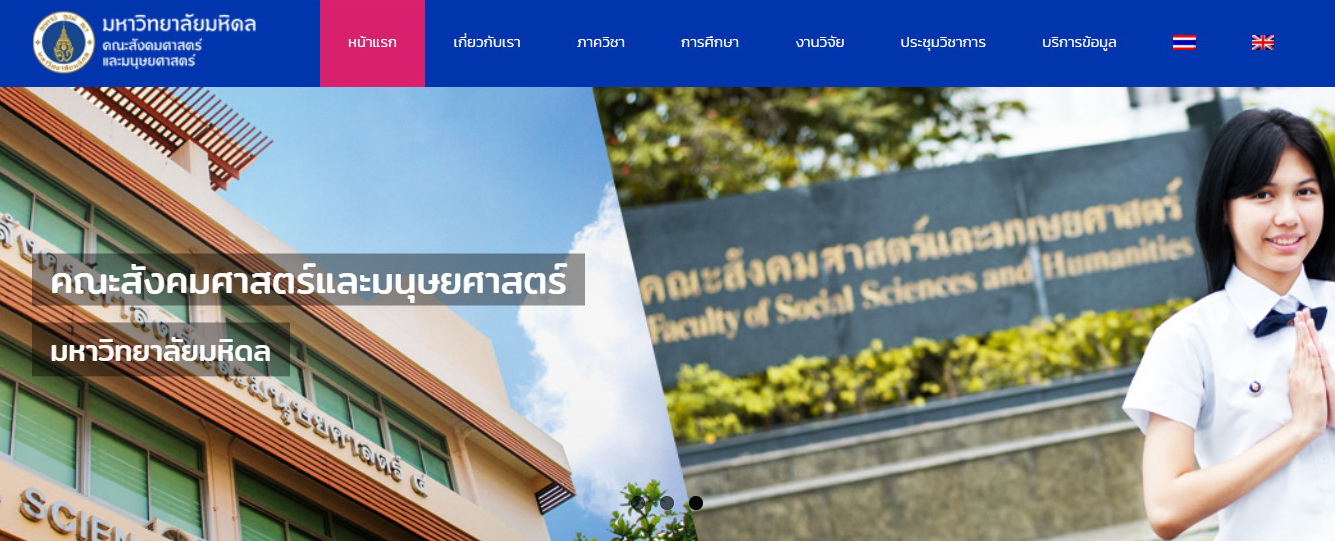การประเมินหลักสูตรโรงเรียนนายเรือ (หลักสูตรปรับปรุง) พ.ศ.2558
คำสำคัญ:
รูปแบบการประเมินแบบซิป, หลักสูตรโรงเรียนนายเรือ, วิชาชีพทหารเรือบทคัดย่อ
การวิจัยในครั้งนี้มีวัตถุประสงค์ 4 ประการ ได้แก่ 1) เพื่อประเมินบริบทของหลักสูตร 2) เพื่อประเมินปัจจัยนำเข้าของหลักสูตร 3) เพื่อประเมินกระบวนการของหลักสูตร และ 4) เพื่อศึกษาแนวทางในการปรับปรุงและพัฒนาหลักสูตร การวิจัยใช้ระเบียบวิธีวิจัยแบบผสมผสาน ประยุกต์ใช้รูปแบบการประเมินแบบซิป กลุ่มผู้ให้ข้อมูล จำนวน 4 กลุ่ม ได้แก่ 1) ผู้บริหาร 2) อาจารย์ประจำหลักสูตร 3) อาจารย์ประจำ และ 4) นักเรียนนายเรือ (นนร.) เครื่องมือในการวิจัย จำนวน 3 ฉบับ ได้แก่ 1) แบบวิเคราะห์เอกสารหลักสูตร 2) แบบสัมภาษณ์แบบมีโครงสร้าง และ 3) แบบประเมินหลักสูตร สถิติที่ใช้ในการวิเคราะห์ ได้แก่ ค่าเฉลี่ยเลขคณิต ค่าส่วนเบี่ยงเบนมาตรฐาน ค่าความถี่ ค่าร้อยละ และการวิเคราะห์เนื้อหา ผลการวิจัยโดยสรุป ดังนี้
- ผลการประเมินบริบทของหลักสูตร: วัตถุประสงค์หลักสูตรในภาพรวมมีความเหมาะสมดี จำนวนหน่วยกิตในหลักสูตรค่อนข้างมาก บางรายวิชามีเนื้อหาซ้ำซ้อนกัน การฝึกทักษะวิชาชีพทหารเรือ ยังไม่เพียงพอ และหลักสูตรการฝึกวิชาชีพทหารเรือยังไม่เป็นมาตรฐานสากล
- ผลการประเมินปัจจัยนำเข้าของหลักสูตร: ปัจจัยนำเข้าของหลักสูตรในภาพรวมมีคุณภาพอยู่ในระดับมาก อาจารย์ประจำไม่เพียงพอและย้ายบรรจุบ่อยครั้ง แนวทางการส่งเสริมการผลิตผลงาน ทางวิชาการ และการเสนอขอตำแหน่งทางวิชาการของอาจารย์ยังไม่มีประสิทธิภาพเท่าที่ควร อาจารย์บางส่วนยังมีทักษะการสอนไม่ดี และอุปกรณ์สนับสนุนการเรียนการสอนบางส่วนชำรุด
- ผลการประเมินกระบวนการของหลักสูตร: กระบวนการของหลักสูตรในภาพรวมมีคุณภาพอยู่ในระดับมาก นนร.มีกิจกรรมจำนวนมาก เวลาเรียนของ นนร.ไม่เพียงพอ โดยเฉพาะชั่วโมงการเรียนวิชาภาษาอังกฤษ
- แนวทางในการปรับปรุงและพัฒนาหลักสูตร ได้แก่ 4.1 ด้านหลักสูตรการศึกษา: เพิ่มการฝึกทักษะวิชาชีพทหารเรือ ลดจำนวนหน่วยกิตในหลักสูตร ปรับปรุงเนื้อหารายวิชาให้ทันสมัย และเทียบเคียงหลักสูตรการฝึกวิชาชีพทหารเรือให้เป็นมาตรฐานสากล 4.2 ด้านการเรียนการสอน: บริหารจัดการเวลาเรียนให้มีประสิทธิภาพมากขึ้น ลดกิจกรรมของ นนร. สร้างระบบและกลไกการบริหารงานวิชาการที่มีประสิทธิภาพ 4.3 ด้านการบริหารครูอาจารย์: บรรจุอาจารย์ประจำให้เพียงพอ จัดกิจกรรมพัฒนา การเรียนการสอนอย่างต่อเนื่อง และ 4.4 ด้านเทคโนโลยีการศึกษา: พัฒนาระบบสารสนเทศเพื่อการบริหารการศึกษา และสนับสนุนวัสดุอุปกรณ์การเรียนการสอนให้เพียงพอ
เอกสารอ้างอิง
กระทวงศึกษาธิการ, สำนักงานคณะกรรมการการอุดมศึกษา. (2551). กรอบแผนระยะยาวอุดมศึกษาระยะยาว 15 ปี ฉบับที่ 2 (พ.ศ.2551 – 2565). สืบค้นเมื่อ 25 ธันวาคม 2559, จาก https://bit.ly/2Y4aUr5
กระทวงศึกษาธิการ, สำนักงานคณะกรรมการการอุดมศึกษา. (2558). ประกาศกระทรวงศึกษาธิการเรื่อง เกณฑ์มาตรฐานหลักสูตรระดับปริญญาตรี พ.ศ. 2558. สืบค้นเมื่อ 25 ธันวาคม 2559, จาก https://bit.ly/2vx0yDA
จรรยา ดาสา, ณสรรค์ ผลโภค, ธีรพงษ์ แสงประดิษฐ์ และสมปรารถนา วงศ์บุญหนัก. (2553). การประเมินและติดตามผลหลักสูตรการศึกษามหาบัณฑิต สาขาวิทยาศาสตร์ศึกษา (แผน ข) มหาวิทยาลัยศรีนครินทรวิโรฒ. กรุงเทพฯ. มหาวิทยาลัยศรีนครินทรวิโรฒ.
จิรภัทร เพ็ชรมงคล. (2555). การประเมินหลักสูตรวิชาวิทยาการทหาร. ปริญญารัฐศาสตรมหาบัณฑิต สาขาวิชาการจัดการทรัพยากรเพื่อความมั่นคง. มหาวิทยาลัยบูรพา.
มาเรียม นิลพันธุ์. (2555). การประเมินหลักสูตรศึกษาศาสตรมหาบัณฑิต สาขาวิชาหลักสูตรและการนิเทศ คณะศึกษาศาสตร์ มหาวิทยาลัยศิลปากร. นครปฐม. มหาวิทยาลัยศิลปากร.
โรงเรียนนายเรือ, กองสถิติและวิจัย. (2560). การติดตามและประเมินผลนายทหารผู้สำเร็จการศึกษาจากโรงเรียนนายเรือ ปีการศึกษา 2556. อัดสำเนา.
โรงเรียนนายเรือ, ฝ่ายศึกษา. (2558). หลักสูตรโรงเรียนนายเรือ (หลักสูตรปรับปรุง) พ.ศ.2558. อัดสำเนา.
โรงเรียนนายเรือ, ฝ่ายศึกษา. (2558). รายงานผลการประชุมสัมมนาเพื่อพัฒนาหลักสูตรและการเรียน การสอนตามหลักสูตรการศึกษา โรงเรียนนายเรือ. อัดสำเนา.
โรงเรียนนายเรืออากาศนวมินทรกษัตริยาธิราช. (2558). หลักสูตรโรงเรียนนายเรืออากาศนวมินทร กษัตริยาธิราช (หลักสูตรปรับปรุง) พ.ศ.2558. อัดสำเนา.
โรงเรียนนายร้อยพระจุลจอมเกล้า. (2558). หลักสูตรโรงเรียนนายร้อยพระจุลจอมเกล้า (หลักสูตรปรับปรุง) พ.ศ.2558. อัดสำเนา.
สถาบันวิชาการป้องกันประเทศ. (2561). คู่มือการประกันคุณภาพการศึกษาภายใน สถาบันการศึกษาของกองทัพ ระดับปริญญาตรีขึ้นไป. อัดสำเนา.
สภาการศึกษาวิชาการทหาร. (2560). รายงาการประชุมสภาการศึกษาวิชาการทหาร ครั้งที่ 2/2560. อัดสำเนา.
สภาการศึกษาวิชาการทหาร. (2555). ข้อบังคับสภาการศึกษาวิชาการทหารว่าด้วยเกณฑ์มาตรฐานหลักสูตรระดับปริญญาตรีของโรงเรียนทหาร พ.ศ.2555. อัดสำเนา.
สุภาพร ตรีนภา. (2554). การประเมินหลักสูตรวิทยาศาสตรมหาบัณฑิต สาขาวิชาวิทยาการประกันภัยและการบริหารความเสี่ยง พ.ศ.2552 คณะสถิติประยุกต์. กรุงเทพฯ. มหาวิทยาลัยศรีนครินทรวิโรฒ.
อิศเรศ พิพัฒน์มงคลพร, ปรณัฐ กิจรุ่งเรือง, ดวงหทัย โฮมไชยะวงศ์, วิลาพัณย์ อุรบุญนวลชาติ และ วิสูตร โพธิ์เงิน. (2556). การประเมินหลักสูตรศึกษาศาสตรบัณฑิต สาขาวิชาการประถมศึกษาคณะศึกษาศาสตร์ มหาวิทยาลัยศิลปากร. นครปฐม. มหาวิทยาลัยศิลปากร.
Best, J.W. (1981). Research in Education. New Jersey: Prentice – Hall.
International Maritime Organization (IMO). (2010). IMO Model Courses. Retrieved from https://www.imo.org/en/OurWork/HumanElement/TrainingCertification/Pages/ModelCourses.aspx
Krejcie, R. V. & Morgan, D. W. (1970). Determining Sample Size for Research Activities. Educational and Psychological Measurement, 30(3), pp. 607-610.
White J. P. (2015). The Concept of Curriculum Evaluation. Journal of Curriculum Studies, 3(2), 101-112.
ดาวน์โหลด
เผยแพร่แล้ว
รูปแบบการอ้างอิง
ฉบับ
ประเภทบทความ
สัญญาอนุญาต
สหศาสตร์: วารสารสังคมศาสตร์และมนุษยศาสตร์ ให้ความสำคัญกับการคุ้มครองลิขสิทธิ์และสิทธิของผู้นิพนธ์ในการเผยแพร่ผลงานวิชาการ โดยมีวัตถุประสงค์เพื่อส่งเสริมความโปร่งใส ความถูกต้องตามหลักวิชาการ และสอดคล้องกับแนวปฏิบัติสากล ทั้งนี้ วารสารกำหนดนโยบายดังต่อไปนี้
|
1. การยอมรับเงื่อนไขการเผยแพร่ - ผู้นิพนธ์ที่ส่งบทความเพื่อตีพิมพ์ ต้องปฏิบัติตามนโยบายและเงื่อนไขการเผยแพร่ของวารสารโดยเคร่งครัด - การส่งบทความถือเป็นการยอมรับให้นำบทความเข้าสู่กระบวนการพิจารณาและการเผยแพร่ตามมาตรฐานของวารสาร |
|
2. การโอนลิขสิทธิ์ - เมื่อบทความได้รับการตอบรับเพื่อตีพิมพ์ ผู้เขียนโอนลิขสิทธิ์ของบทความให้แก่วารสาร - วารสารมีสิทธิ์เผยแพร่ ทำซ้ำ และเผยแพร่บทความในทุกรูปแบบ ทั้งสิ่งพิมพ์ เว็บไซต์ และสื่อออนไลน์อื่น ๆ |
|
3. สิทธิ์ของผู้นิพนธ์หลังการโอนลิขสิทธิ์ - ผู้นิพนธ์ยังคงมีสิทธิ์ใช้บทความเพื่อวัตถุประสงค์ทางวิชาการ เช่น การสอน การวิจัยส่วนบุคคล การใช้ประกอบวิทยานิพนธ์ หรือการเผยแพร่ในแพลตฟอร์มที่ไม่ใช่เชิงพาณิชย์ - การนำบทความไปใช้เพื่อวัตถุประสงค์เชิงพาณิชย์ ต้องได้รับอนุญาตจากวารสารก่อนเป็นลายลักษณ์อักษร |
|
4. การเผยแพร่ภายใต้สัญญาอนุญาตสาธารณะ (Creative Commons License) - บทความทั้งหมดในวารสารจะเผยแพร่ภายใต้สัญญาอนุญาต Creative Commons Attribution-NonCommercial-NoDerivatives 4.0 International (CC BY-NC-ND 4.0) - บุคคลอื่นสามารถเผยแพร่หรือแบ่งปันบทความได้โดยต้องให้เครดิตแก่ผู้นิพนธ์ต้นฉบับ แต่ห้ามแก้ไข ดัดแปลง หรือใช้ในเชิงพาณิชย์ |
|
5. ความถูกต้องของเนื้อหาและการใช้สื่อจากบุคคลที่สาม - ผู้เขียนต้องรับรองว่าบทความที่ส่งเพื่อตีพิมพ์เป็นผลงานต้นฉบับของตนเอง ไม่ได้ส่งซ้ำซ้อน (duplicate submission) และไม่ละเมิดลิขสิทธิ์หรือคัดลอกผลงานของผู้อื่น รวมถึงไม่มีการปลอมแปลงข้อมูล การตีพิมพ์ซ้ำ หรือการกระทำใด ๆ ที่ขัดต่อหลักจริยธรรมทางวิชาการ - ผู้เขียนต้องรับผิดชอบในการขออนุญาตใช้สื่อจากบุคคลที่สาม เช่น ภาพ ตาราง หรือกราฟิก และต้องอ้างอิงหรือให้เครดิตอย่างถูกต้องน |
|
6. ข้อจำกัดความรับผิดชอบ (Disclaimer) - บทความที่ได้รับการตีพิมพ์ในวารสารสหศาสตร์: วารสารสังคมศาสตร์และมนุษยศาสตร์ถือเป็นลิขสิทธิ์ของวารสาร - ข้อความ ข้อมูล และข้อคิดเห็นที่ปรากฏในบทความเป็นความรับผิดชอบของผู้เขียนแต่ละท่านโดยตรง มิได้สะท้อนถึงทัศนะหรือจุดยืนของกองบรรณาธิการหรือหน่วยงานที่เกี่ยวข้อง - หากบทความมีข้อผิดพลาดหรือการละเมิดสิทธิ์ใด ๆ ความรับผิดชอบทั้งหมดเป็นของผู้เขียนแต่เพียงผู้เดียว - การนำบทความไปใช้ในเชิงพาณิชย์ ต้องได้รับอนุญาตเป็นลายลักษณ์อักษรจากบรรณาธิการวารสารก่อน ทั้งนี้ ผู้ขออนุญาตต้องจัดทำคำชี้แจงเกี่ยวกับวัตถุประสงค์และลักษณะการใช้งานอย่างชัดเจน การใช้บทความในเชิงพาณิชย์โดยไม่ได้รับอนุญาตถือเป็นความรับผิดชอบของผู้ใช้แต่เพียงผู้เดียว |




